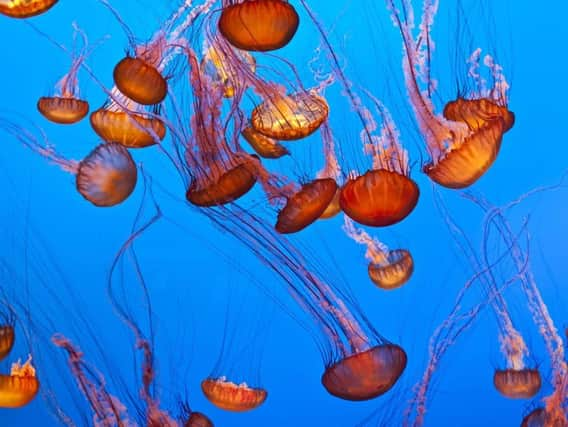Call the Midwife: Aquarium trains up jellyfish breeding specialists


The three new aquarists will work in a new zone with Moon Jelly, Pacific Sea Nettle and Cannonball Jellies, with a focus on the effect of climate change on jellyfish populations.
With special training in place from jellyfish expert and senior aquarist Joe Williams, he hopes to get his new recruits up and running to become the best jellyfish breeders in town.
Advertisement
Hide AdAdvertisement
Hide Ad“We hope they’re up for the challenge” said Mr Williams. “Jellyfish are hard to look after, especially given that the life expectancy of a jellyfish is between nine and 12 months depending on the species. The key to being a successful jellyfish midwife is to get conditions exactly right but, once you crack it you’re onto a winner."


Jellyfish use a ‘zeitgeber’ to breed – an external cue which aligns their biological rhythms to the earth's 24-hour cycle, and Mr Williams said it will be the team's job to work out how to replicate this to encourage breeding.
Joe was trained by Jellyfish experts at Sea Life London Aquarium.
“We’ve seen a lot of success in London that we want to replicate, and I’ve been working closely with their aquarists, picking up their tips and tricks," he said.
Advertisement
Hide AdAdvertisement
Hide AdMr Williams said unlike many marine populations which are suffering due to damage often caused by humans, marine biologists are seeing more blooms of jellyfish than ever before.
But increased jellyfish populations in the wild are having a negative effect on the ecosystems, he said. Increased populations cause them to outcompete other animals for food. They also produce a lot of slimy waste which, unlike other creatures waste, feeds little in the ocean and has little biological benefit.
“By breeding jellies in controlled conditions we can understand their cycles, life histories and breeding processes more in order to help conservation efforts and benefit the environment," Mr Williams said.
New recruit Marisa Cardoso, said: “It’s a privilege working in this new area and looking after these fascinating creatures. Joe has been preparing us with a crash course in jellyfish midwifery and I’m looking forward to seeing how the breeding programme develops.”
Advertisement
Hide AdAdvertisement
Hide AdExtensive training includes general husbandry such as cleaning and water changes, as well as water quality checks, health checking, feeding, breeding and how to care for polyps – baby jellyfish.
Aside from jellyfish midwifery, the new team will also be responsible for looking after the 3,500 other creatures that already call Sea Life home.
The new exhibition will be a permanent display open from Friday (March 30).